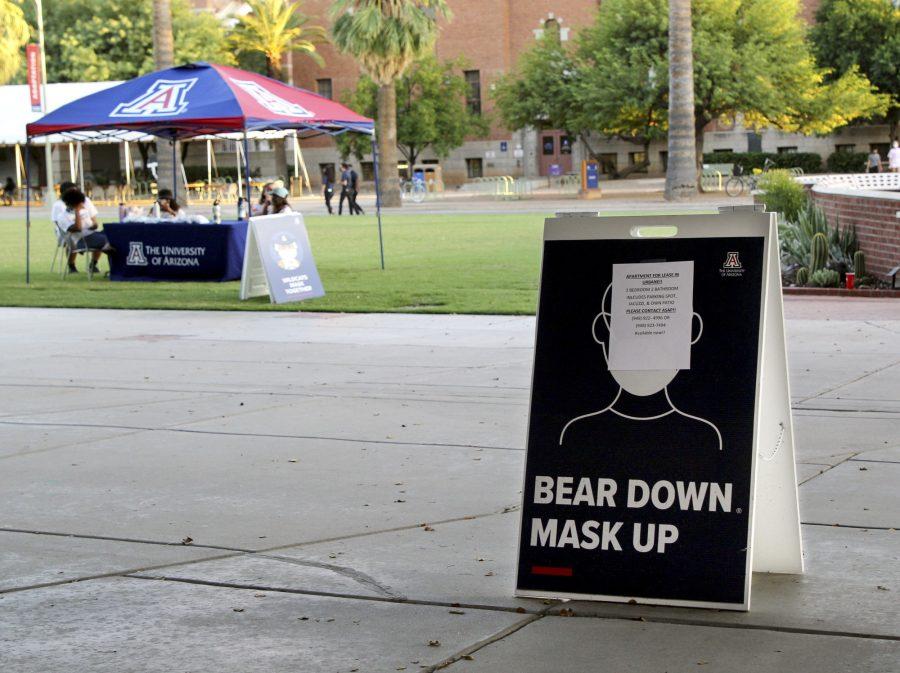Socializing during the COVID-19 pandemic proved to be difficult for students in college over the last year. People were not able to engage in the usual social activities that occur on campus.
In the past, attending class and joining clubs on campus were some of the easiest ways to make friends, but since most classes are taught via Zoom and clubs rarely meet in person, these go-to ways of making friends are no longer applicable.
Prior to entering Phase 2 of the COVID-19 reentry plan, the University of Arizona limited all events to a maximum of 10 people inhibiting many clubs and organizations from doing anything in person.
For freshmen, this was particularly challenging since some did not come to school knowing other students. Meeting other people face-to-face became practically impossible.
“A lot of the stuff that I wanted to get involved in never met face-to-face. It was only ever over Zoom,” said Isaiah Horton, a freshman majoring in history.
However, Horton had second-hand knowledge of what the UA’s social scene was like before he entered his freshman year.
“I remember my sister would always tell me about the different events that were going on, so I guess I wish I could experience that,” Horton said.
This lack of in-person social interaction on campus negatively affected the mental health of the UA’s students as a whole according to Amy Cunningham, a licensed clinical social worker and therapist at UA Counseling & Psych Services.
“I have seen [students] feel isolated from others … and detached from the normal routines that kept them moving and energized,” Cunningham said via email.
This is not abnormal in other parts of the country either. In a study conducted by the Journal of Medical Internet Research, 86% of the students surveyed said the pandemic increased their level of social isolation.
“If you take away the opportunity to socialize … it also keeps people from developing and maintaining the necessary, and energizing, process of connecting with others,” Cunningham said.
Despite the circumstances, some were still discovering ways to overcome this and form connections with others.
RELATED: OPINION: Love myself? That’s much easier said than done.
Riley Parker, a freshman majoring in criminal justice, said that many people are finding ways to gather safely outside or socially distanced.
“I see tons of people out on the [UA] Mall and in libraries just to break up their days,” Parker said. “Going to the Science-Engineering Library is my favorite way to feel like I’m in school.”
Finding places to visit during the day is a piece of advice Cunningham has been recommending to students as well.
“I love hearing stories of isolated students finding places on campus where they can study or Zoom into their classes as a way of staying connected to the campus rather than spending all their time in a dorm room, for example,” Cunningham said.
Joining clubs could be one way to break up the days, but part of the challenge was discovering different clubs to join in the first place. Many are not as well-advertised without in-person club fairs, so students could miss opportunities to get involved early on.
Horton wished the university would tell its students about these opportunities. He said without an older sibling at the school he would not have known what to do or how to join anything.
RELATED: Reading day daytrips
Horton and Parker joined organizations such as Primus, Bear Down Camp and Greek Life, which they said made the transition easier. Both students said that is how they made most of their friends so far this year.
“My dorm and my sorority have been the most helpful ways for me to spend time with people during this time,” Parker said.
Students are eager to resume a normal routine, and many look forward to the day that brings activities back in person.
“I think once everything is back to normal it’s going to be awkward at first, but everyone will want to be out and making new friends again,” Parker said.
Follow Jane Florance on Twitter















